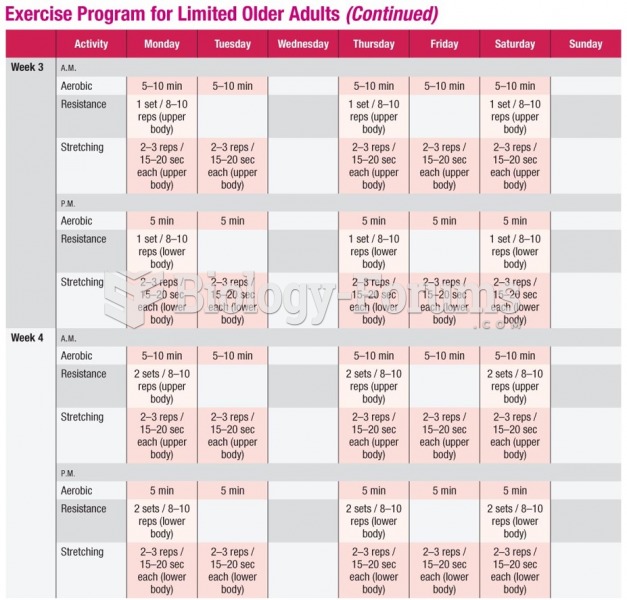Answer to Question 1
2
Rationale 1: Complete blood count (CBC) and electrolytes are not likely to help in determining the proper drug dosage.
Rationale 2: Renal and hepatic function tests are essential for many patients, particularly older patients and those who are critically ill, as these will be used to determine the proper drug dosage.
Rationale 3: Arterial blood gases (ABGs) and a basic metabolic panel are not likely to help in determining the proper drug dosage.
Rationale 4: Lipid panel and thyroid function tests are not likely to help in determining the proper drug dosage.
Global Rationale: Renal and hepatic function tests are essential for many patients, particularly older patients and those who are critically ill, as these will be used to determine the proper drug dosage. Complete blood count (CBC) and electrolytes, lipid panel and thyroid function tests; and ABGs and a basic metabolic panel are not likely to help in determining the proper drug dosage.
Answer to Question 2
2
Rationale 1: A list of medications provided by the patient's wife is subjective, not objective, data.
Rationale 2: Objective data includes information gathered through assessment, and not necessarily what the patient says or perceives. The most reliable and objective assessment by the nurse is to check the patient's prescription medication bottles.
Rationale 3: Asking the physician what medication the patient was receiving is subjective data, and the physician may not remember all the medication the patient was receiving.
Rationale 4: A list of medications provided by the patient is subjective, not objective, data. Asking the physician what medication the patient was receiving is subjective data, and the physician may not remember all the medication the patient was receiving.
Global Rationale: Objective data includes information gathered through assessment, and not necessarily what the patient says or perceives. The most reliable and objective assessment by the nurse is to check the patient's prescription medication bottles. A list of medications provided by the patient and the patient's wife is subjective, not objective data. Asking the physician what medication the patient was receiving is subjective data, and the physician may not remember all the medication the patient was receiving.







